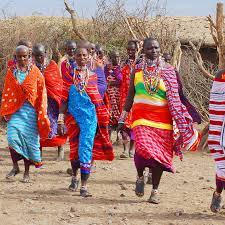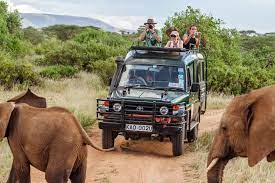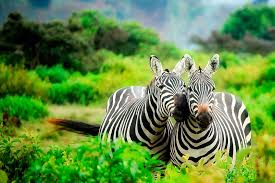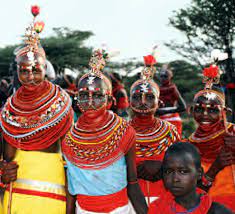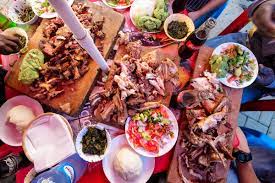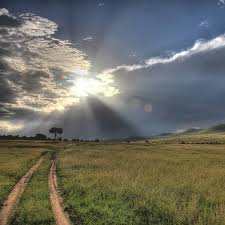Overview
A game reserve (also known as a wildlife preserve or a game park)[1] is a large area of land where wild animals live safely[2] or are hunted in a controlled way for sport.[3] If hunting is prohibited, a game reserve may be considered a nature reserve; however, because the focus of a game reserve is specifically the animals (fauna), whereas a nature reserve also if not equally is concerned with all aspects of naturally-occurring life in the area (plants, animals, insects, etc.). Many game reserves are located in Africa.[4] Most are open to the public, and tourists commonly take sightseeing safaris. Historically, among the most well-known hunting targets were the so-called Big Five game in Africa: rhinoceros, elephant, Cape buffalo, leopard and lion, named so because of the difficulty and danger in hunting them.[5] In a game reserve, ecosystems are protected and conservation is usually key. Indigenous wildlife in its natural habitat help in providing an environment where growth in numbers at a natural rate can occur. Some game reserves contain more than one ecosystem, sometimes even five, ranging from valley bushveld, savannah grassland and fynbos to riverine forest and acacia woodland; this provides a dramatic improvement on the types of wildlife that are present and the numerous species of birds that thrive on in these environments
Best Time to Visit
The best time to visit Selous is June to October which also ranks as the highest season. Six to 8 hours drive towards the southern part of Tanzania, south of Dar es Salaam, is where the Selous Game Reserve is located covering an area of about 54,600 square kilometers.
Getting There
Getting to the Selous is easy, it is served by light aircraft flights from Dar and Ruaha daily – a flight takes about 45 minutes from Dar, and about 90 minutes from Ruaha.
Activities
One of the main attractions of the Selous is the variety of game viewing activities available here. They all offer trips through the reserve by boat, vehicle and on foot. Boat safaris allow you to drift on the lakes and channels, approaching birds and animals closely, including crocodile and hippo. All of the lodges also offer guided game walks for those aged 12 and over (16 at Lake Manze and Impala), which come with a real likelihood of encountering big game such as; elephant, buffalo and even lion on foot. Game drives are reliably rewarding, especially towards the end of the dry season, when large mammals concentrate around the five lakes. Better still are the overnight fly-camping excursions offered by some of the camps, which entail sleeping out beneath a glorified mosquito net in the middle of the bush.
Uniqueness
Animals
The prodigiously large mammal populations found here, support the claim that the Selous is the greatest surviving African wilderness. Buffalo numbers are estimated at 120,000–150,000, and the reserve’s 40,000 hippo and 4,000 lion are probably the largest such populations on the continent. The Selous also harbors an estimated 100,000 wildebeest, 35,000 zebra, 25,000 impala and significant herds of giraffe, greater kudu, waterbuck, bushbuck, Lichtenstein’s hartebeest and eland. It is also one of the most important sanctuaries in Africa for the endangered African wild dog, sable and puku antelope. There are also huge populations of crocodile, hippo, spotted hyena and leopard to name just a few of the big game species found here. Historically Selous has been home to a large proportion of Tanzania’s elephants population, but unfortunately there has been a marked increase in poaching over recent years and elephant numbers are now much lower than they once were.
Birdlife
More than 440 bird species have been recorded in the Selous. On the lakes you’ll find pink-backed pelicans, African skimmers and giant kingfishers. The sandbanks are home to carmine and white-fronted bee-eater colonies whilst pairs of fish eagle, palmnut vulture, ibises and palm swifts nest in the borassus palms. Other waterbirds found in the Selous include: yellow-billed stork, white-crowned and spur-winged plovers, various small waders, pied and malachite kingfishers. Pairs of trumpeter hornbill and purple-crested turaco can also be seen between the riparian trees. Also worth looking out for among a catalogue of egrets and herons is the Malagasy squacco heron, a regular winter visitor, while the elusive Pel’s fishing owl often emerges at dusk to hawk above the water.


